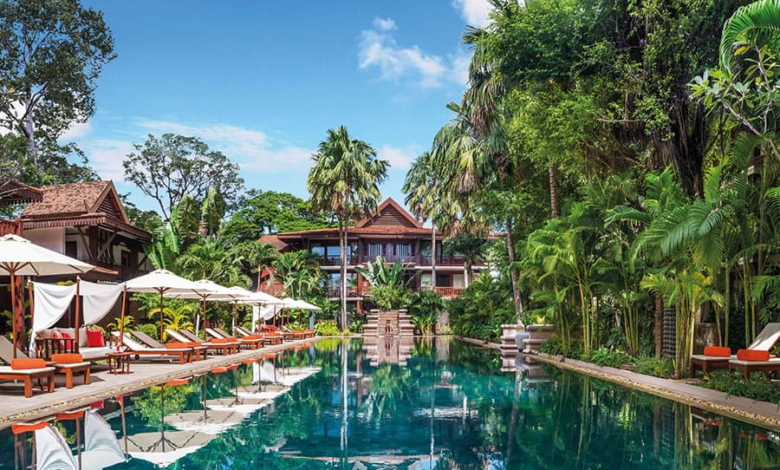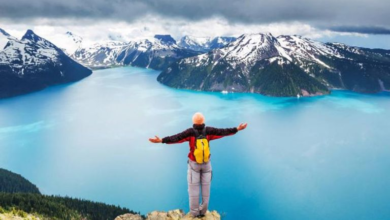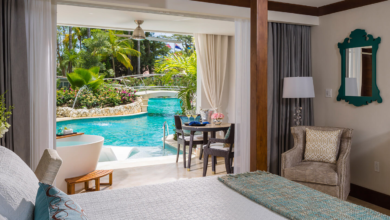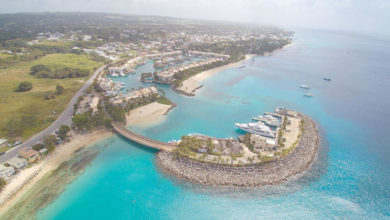Journey into the Enchanting Realm of Cambodia: Exploring Nature’s Magic

Journey into the Enchanting Realm of Cambodia: Exploring Nature’s Magic
Introduction:
Cambodia, a land steeped in ancient history and vibrant culture, offers travelers a unique opportunity to experience the magic of nature. From awe-inspiring temples to lush forests and pristine coastlines, this Southeast Asian gem is a haven for those seeking an immersive adventure in the lap of Mother Nature. Embark on a journey through Cambodia’s enchanting landscapes as we unveil the country’s natural wonders and the captivating experiences they hold.
- Angkor Wat and the Temples:
Begin your exploration in Siem Reap, where the legendary Angkor Wat awaits. This UNESCO World Heritage Site is the largest religious monument in the world and a testament to the Khmer Empire’s architectural mastery. As the sun rises, witness the temple’s silhouette against the golden hues of the sky, creating a magical ambiance like no other. Explore the surrounding temples, such as Ta Prohm, where ancient ruins are intertwined with massive tree roots, creating a mystical atmosphere that transports you to another era. - Tonle Sap Lake:
Venture to the heart of Cambodia’s natural beauty by visiting Tonle Sap, the largest freshwater lake in Southeast Asia. Embark on a boat excursion to witness the lake’s seasonal transformation, where water levels rise and fall dramatically, shaping the surrounding landscapes. Marvel at the floating villages, stilted houses, and vibrant markets that come alive with the rhythm of daily life on the water. Encounter a rich diversity of bird species, including painted storks and pelicans, as you navigate through the serene waterways. - Cardamom Mountains:
For an immersive jungle experience, head to the Cardamom Mountains in southwestern Cambodia. This vast, biodiverse region is home to dense rainforests, cascading waterfalls, and a plethora of wildlife. Embark on guided treks to discover hidden gems within the mountains, encountering rare species such as Asian elephants, clouded leopards, and gibbons. Immerse yourself in the vibrant ecosystems, camping under starlit skies, and listening to the symphony of nature that envelops the mountains. - Mondulkiri Province:
Escape to the northeastern province of Mondulkiri, known for its unspoiled beauty and rich indigenous culture. Explore the rolling hills, lush valleys, and picturesque waterfalls that dot the landscape. Embark on an elephant trek, where you can observe these majestic creatures in their natural habitat and learn about the local conservation efforts. Engage with indigenous communities, such as the Bunong people, and gain insight into their traditional way of life, ancient customs, and unique traditions. - Koh Rong Archipelago:
Experience the magic of Cambodia’s coastal beauty at the Koh Rong Archipelago. Escape to pristine white-sand beaches, crystal-clear waters, and vibrant coral reefs teeming with marine life. Dive into the underwater world, snorkeling or scuba diving amidst colorful tropical fish and stunning coral formations. Unwind on secluded beaches, surrounded by the serenity of nature, and witness mesmerizing sunsets that paint the sky with hues of orange and pink. - Preah Monivong Bokor National Park:
Discover the mystical allure of Preah Monivong Bokor National Park, nestled in the Elephant Mountains. Ascend to the misty summit, where a ghostly abandoned French colonial hill station awaits. Wander through the eerie ruins, imagining a bygone era while enjoying panoramic views of the lush forests and coastline below. Trek through the park’s trails, encountering diverse flora and fauna, and visit the impressive Popokvil Waterfall, where cascading waters create a symphony of nature’s melody.
I hope these additional insights into Cambodia have piqued your interest further. The country’s rich architectural heritage, community-based tourism initiatives, stunning islands, traditional music and games, wildlife sanctuaries, and floating markets all contribute to the diverse and vibrant tapestry of Cambodian culture. Balancing exploration of ancient sites with an understanding of the country’s recent history allows for a comprehensive appreciation of Cambodia’s past, present, and future.

- Irrawaddy Dolphins:
Head to the peaceful town of Kratie, situated along the Mekong River, to witness the rare and endangered Irrawaddy dolphins. Take a boat excursion and cruise along the river, keeping your eyes peeled for these gentle creatures as they surface and play in the water. Their unique appearance and playful behavior make for a truly memorable wildlife encounter. - Prek Toal Bird Sanctuary:
Nature enthusiasts and bird lovers should not miss a visit to the Prek Toal Bird Sanctuary near the Tonle Sap Lake. This protected area is a haven for various bird species, including the endangered spot-billed pelican and the rare masked finfoot. Embark on a guided boat tour to explore the sanctuary’s flooded forests, marshlands, and floating villages, while marveling at the diverse birdlife that calls this area home. - Ream National Park:
Located near the coastal city of Sihanoukville, Ream National Park is a pristine nature reserve that combines dense mangroves, lush forests, and idyllic beaches. Explore the park’s trails on foot or by boat, and encounter a wealth of wildlife, including macaques, gibbons, and various bird species. Relax on the secluded beaches within the park, surrounded by the serene beauty of nature. - Kulen Mountain:
Nestled in the Phnom Kulen National Park, Kulen Mountain is a sacred site that holds historical and natural significance. Embark on a hike to the mountaintop, passing by ancient temples and intricate carvings. Reach the summit to discover the mesmerizing Kulen Waterfall, where cool cascades flow into natural pools, providing a refreshing spot for a swim. The lush greenery, spiritual ambiance, and natural beauty of Kulen Mountain make it a captivating destination. - Banteay Srei Butterfly Centre:
Experience the enchantment of Cambodia’s butterfly biodiversity at the Banteay Srei Butterfly Centre. Located near Siem Reap, this conservation center aims to educate visitors about the importance of butterfly conservation. Explore the lush gardens and walk through enclosed habitats, where you can witness a kaleidoscope of colorful butterflies fluttering around. Gain insights into the butterfly life cycle and learn about efforts to protect these delicate creatures. - Tatai Waterfall:
For a tranquil retreat amidst nature, visit the Tatai Waterfall in the Cardamom Mountains. This picturesque waterfall flows gently through the forest, creating a soothing ambiance. Stay at one of the eco-lodges nestled along the river and indulge in activities such as kayaking, paddleboarding, or simply relaxing in a hammock while surrounded by the sights and sounds of the lush jungle. - Mekong River Sunset Cruise:
Embark on a scenic sunset cruise along the mighty Mekong River, which flows through Cambodia. Revel in the breathtaking vistas as the sun casts its golden hues over the water, painting a mesmerizing canvas of colors. Witness the local life along the riverbanks, spot fishermen in traditional boats, and soak in the peaceful atmosphere of this iconic waterway. - Kep National Park:
Escape to the coastal town of Kep and explore the Kep National Park, a hidden gem known for its natural beauty and hiking trails. Trek through the park’s lush forests, encountering diverse flora and fauna along the way. Reach the viewpoints to capture panoramic vistas of the Gulf of Thailand and the surrounding islands. The park is also home to the famous Crab Market, where you can savor delicious seafood while enjoying the serene seaside ambiance. - Caving in Kampong Trach:
Discover the mystical underground world of Kampong Trach, a small town in southern Cambodia. Explore limestone caves adorned with stalactites and stalagmites, creating surreal formations. Marvel at the hidden temples nestled within the caves and the natural pools illuminated by rays of sunlight. The caves of Kampong Trach offer a unique adventure for spelunking enthusiasts and those seeking an off-the-beaten-path experience.
Cambodia’s natural wonders are abundant, providing a wealth of opportunities to immerse yourself in the magic of nature. Whether it’s encountering rare wildlife, exploring ancient forests, or relaxing on pristine beaches, Cambodia invites you to embark on a journey of discovery and create lasting memories in its captivating landscapes.

- Phnom Kulen National Park:
Phnom Kulen National Park, located northeast of Siem Reap, is a significant cultural and natural site. The park is known for its sacred mountain, which is considered the birthplace of the ancient Khmer Empire. Explore the park’s lush jungles, visit ancient temples and hidden waterfalls, and take a dip in the natural pools found at the base of the cascades. Phnom Kulen is also home to the iconic “River of a Thousand Lingas,” where the riverbed is adorned with ancient carvings. - Kirirom National Park:
Escape the bustling cities and retreat to the tranquility of Kirirom National Park, situated in the Cardamom Mountains. The park is known for its cooler temperatures, dense pine forests, and scenic trails. Hike through the lush greenery, encounter various bird species, and enjoy panoramic views from the park’s viewpoints. Kirirom is an ideal destination for nature lovers, offering camping opportunities and a chance to reconnect with the serenity of the natural world. - Preah Vihear Temple:
Perched atop a cliff in the Dangrek Mountains, Preah Vihear Temple is a UNESCO World Heritage Site and a testament to Khmer architecture. The temple’s stunning location offers breathtaking views of the surrounding landscapes. Embark on a journey to this remote destination, traversing steep slopes and winding roads, and be rewarded with a glimpse of this ancient marvel. The temple’s intricate carvings and commanding presence make it a must-visit for history enthusiasts and nature lovers alike. - Chi Phat Ecotourism Village:
Immerse yourself in Cambodia’s sustainable tourism initiatives by visiting the Chi Phat Ecotourism Village in the Cardamom Mountains. This community-based project aims to preserve the region’s natural resources while providing economic opportunities for local communities. Engage in a range of activities such as jungle trekking, wildlife spotting, and kayaking through pristine rivers. Experience the warmth and hospitality of the villagers, and gain insights into their traditional way of life and conservation efforts. - Botum Sakor National Park:
Located in southwestern Cambodia, Botum Sakor National Park is a vast wilderness area renowned for its diverse ecosystems. Explore the park’s dense rainforests, wetlands, and mangrove forests, which are home to an array of wildlife, including tigers, elephants, and rare bird species. Take a boat trip along the park’s rivers and spot crocodiles or venture on a guided trek to discover hidden waterfalls and encounter the region’s rich biodiversity. - Kampong Thom Province:
Venture to Kampong Thom Province, located in central Cambodia, to witness its natural and historical wonders. Explore the sprawling Prey Pros, a protected wildlife sanctuary known for its population of critically endangered giant ibis. Visit the Sambor Prei Kuk archaeological site, a collection of over 100 well-preserved temples dating back to the Chenla Kingdom. Kampong Thom Province offers a blend of cultural heritage and natural beauty, providing a unique and off-the-beaten-path experience. - Bokor Hill Station:
Explore the mist-shrouded Bokor Hill Station, a former French colonial retreat situated in the Elephant Mountains. Ascend to the summit and wander through the abandoned buildings, including a grand hotel and a church, while enjoying panoramic views of the coastline below. The cool climate, dense forests, and intriguing history make Bokor Hill Station an atmospheric destination that combines natural beauty with a touch of mystery.
These additional destinations and experiences in Cambodia will allow you to delve deeper into the country’s natural marvels and create a truly unforgettable journey. From sacred mountains and hidden waterfalls to sustainable ecotourism initiatives and historical sites, Cambodia’s magic of nature continues to captivate and inspire visitors from around the world.

- Tonle Sap Lake:
Tonle Sap Lake is the largest freshwater lake in Southeast Asia and an ecological marvel. It is located near Siem Reap and is a UNESCO Biosphere Reserve. The lake is known for its unique phenomenon of seasonal water flow. During the rainy season, the lake’s size expands dramatically, and it becomes a vital breeding ground for fish and other aquatic life. Take a boat tour to explore its floating villages, observe traditional fishing techniques, and witness the vibrant daily life of the communities living on the lake. - Traditional Khmer Cuisine:
Cambodian cuisine, also known as Khmer cuisine, is a delightful blend of flavors and influences. It features fresh ingredients, aromatic herbs, and a balance of sweet, sour, salty, and bitter tastes. Some iconic dishes to try include Amok (a coconut-based fish curry), Lok Lak (stir-fried beef with a tangy sauce), and Nom Banh Chok (rice noodles with fish curry). Explore the local markets and street food stalls to savor the authentic flavors of Cambodia. - Traditional Arts and Crafts:
Cambodia has a rich artistic heritage, and traditional arts and crafts are an integral part of its culture. Witness the intricate art of silk weaving, where skilled artisans create beautiful textiles using traditional looms. Explore the markets to discover handmade pottery, wood carvings, and silverware crafted by talented local artisans. Don’t miss the opportunity to attend a traditional dance performance, such as the Apsara dance, which showcases graceful movements and colorful costumes. - Festivals and Celebrations:
Cambodia is known for its vibrant festivals, which are deeply rooted in its religious and cultural traditions. The most famous festival is the Khmer New Year, known as “Chaul Chnam Thmey,” celebrated in April. During this time, locals engage in lively water fights and visit temples to offer prayers and make merit. The Bon Om Touk (Water Festival) is another highlight, featuring boat races on rivers and lakes, accompanied by fireworks and illuminated floats. These festivals provide a unique glimpse into Cambodia’s cultural heritage and offer a chance to celebrate alongside the locals. - Traditional Khmer Medicine:
Cambodia has a long history of traditional medicine, known as “Kru Khmer.” It combines herbal remedies, massage, and spiritual practices to promote healing and balance in the body. Visit traditional medicine clinics or wellness centers to learn about medicinal plants and experience traditional Khmer massage, which focuses on pressure points and stretching techniques. Traditional medicine plays an important role in Cambodian culture and is deeply intertwined with the beliefs and practices of its people. - Cambodian Folklore and Mythology:
Cambodian folklore and mythology are filled with captivating tales and mythical creatures. The most famous mythological story is the “Ramayana,” an epic poem that narrates the adventures of Prince Rama. It is often depicted in traditional dance performances and ancient temple carvings. Other mythical creatures found in Cambodian folklore include the “Naga,” a serpent-like water deity, and the “Kinnari,” a half-bird, half-human creature. Exploring these legends and folklore adds an enchanting layer to Cambodia’s cultural tapestry. - Cambodian Silk:
Cambodian silk is renowned for its exquisite quality and intricate designs. Traditional silk weaving has been practiced for centuries in Cambodia, and the art is passed down through generations. Visit silk farms and workshops to witness the intricate process of silk production, from harvesting silk cocoons to dyeing the threads and weaving them into luxurious fabrics. Supporting the local silk industry not only allows you to take home a piece of Cambodia’s craftsmanship but also contributes to the preservation of this traditional art form. - Contemporary Art Scene:
Cambodia’s contemporary art scene has been experiencing a revival in recent years. Emerging artists are creating thought-provoking works that reflect on Cambodia’s history, society, and cultural identity. Explore art galleries and creative spaces in Phnom Penh and Siem Reap to discover contemporary paintings, sculptures, installations, and multimedia art. Engaging with Cambodia’s contemporary art allows you to witness the evolving narratives and expressions of the country’s talented artists.
These additional aspects of Cambodia’s culture and heritage will deepen your understanding and appreciation for this captivating country. From its culinary delights and traditional arts to its festive celebrations and mythical tales, Cambodia offers a tapestry of experiences that will leave a lasting impression.

- Cambodian Architecture:
Cambodian architecture is renowned for its majestic temples and ancient structures. The most iconic example is the Angkor Wat, a UNESCO World Heritage Site and the largest religious monument in the world. Marvel at its intricate bas-reliefs and towering spires. Other notable architectural gems include the Bayon Temple with its enigmatic smiling faces and the atmospheric Ta Prohm Temple, famously engulfed by tree roots. The architecture of Cambodia reflects the rich history and cultural heritage of the Khmer Empire. - Community-Based Tourism:
Community-based tourism initiatives have been established in various regions of Cambodia, offering visitors an opportunity to engage with local communities and contribute to their development. These initiatives allow you to immerse yourself in the daily lives of villagers, participate in traditional activities, and learn about their customs and traditions. Homestays and community-led tours provide a more authentic and meaningful travel experience while supporting sustainable tourism practices and empowering local communities. - Cambodia’s Islands:
While Cambodia may not be the first destination that comes to mind for island getaways, it is home to several beautiful tropical islands in the Gulf of Thailand. Koh Rong and Koh Rong Samloem are the most popular islands, known for their pristine beaches, crystal-clear waters, and vibrant marine life. These islands offer a tranquil retreat with opportunities for snorkeling, diving, and sunbathing. Enjoy the laid-back atmosphere, watch stunning sunsets, and indulge in fresh seafood at beachfront restaurants. - Traditional Khmer Music:
Traditional Khmer music is an integral part of Cambodia’s cultural heritage. It is characterized by unique instruments such as the “pin peat” ensemble, which consists of xylophones, gongs, and drums. The melodies and rhythms of Khmer music evoke a sense of nostalgia and often accompany traditional dance performances. Attend a traditional music and dance show to witness the beauty and grace of this art form, or visit local music schools to learn about the traditional instruments and their significance. - Cambodia’s Wildlife Sanctuaries:
Cambodia is home to several wildlife sanctuaries that aim to protect the country’s diverse flora and fauna. The Cardamom Mountains, in particular, house significant sanctuaries such as the Cardamom National Park and the Cambodia Wildlife Sanctuary. These protected areas offer opportunities for wildlife spotting, including endangered species like Asian elephants, Indochinese tigers, and Irrawaddy dolphins. Join guided tours or embark on multi-day treks to explore these sanctuaries and contribute to their conservation efforts. - Cambodian Traditional Games:
Cambodian traditional games provide a glimpse into the country’s cultural traditions and are enjoyed by both children and adults. One popular game is “Chol Chhoung,” a throwing-and-catching game played during the Cambodian New Year. “Teanh Prot,” a game similar to volleyball, is played with a rattan ball and requires players to keep it airborne using any body part except their hands. Engaging in these traditional games not only provides entertainment but also fosters a connection with Cambodian culture. - Cambodia’s Floating Markets:
Experience the vibrant and bustling atmosphere of Cambodia’s floating markets, where locals sell fresh produce, handicrafts, and street food from their boats. The most famous floating market is Chong Khneas, located near Siem Reap. Take a boat tour through the market, interact with the vendors, and witness the unique way of life along the waterways. Floating markets offer a colorful and immersive experience, showcasing the resourcefulness and resilience of Cambodian communities. - Khmer Rouge History and Memorials:
While exploring Cambodia’s rich cultural heritage, it is also important to acknowledge the country’s tragic history during the Khmer Rouge regime from 1975 to 1979. Visit the Tuol Sleng Genocide Museum in Phnom Penh, which was once a notorious Khmer Rouge prison, to learn about the regime’s atrocities. Pay respects at the Killing Fields of Choeung Ek, a memorial site where thousands of victims were executed and buried. These sites serve as reminders of Cambodia’s past and honor the memory of those who suffered. - Traditional Khmer Wedding Ceremonies:
Witnessing a traditional Khmer wedding ceremony is a fascinating cultural experience. These ceremonies are steeped in tradition and involve elaborate rituals and customs that reflect the country’s deep-rooted beliefs. From the blessings of the monks to the colorful processions and traditional attire, a Khmer wedding offers a glimpse into the sacred union of two individuals and the importance placed on family and community. - Cambodian Royal Palace:
Visit the Royal Palace in Phnom Penh, a splendid complex that serves as the official residence of the King of Cambodia. Explore the ornate buildings, including the Silver Pagoda, which houses a floor adorned with pure silver tiles. Admire the grandeur of the Throne Hall and stroll through the manicured gardens. The Royal Palace offers a glimpse into the country’s monarchy and showcases exquisite Khmer architecture.
Conclusion:
Cambodia’s travel and tourism offerings are a gateway to a world of natural enchantment. From the awe-inspiring temples of Angkor Wat to the pristine coastlines of the Koh Rong Archipelago, and the untamed beauty of the Cardamom Mountains and Mondulkiri Province, Cambodia’s magic of nature beckons explorers to immerse themselves in its captivating landscapes. Embark on an unforgettable journey through this Southeast Asian gem, where ancient history, vibrant culture, and the wonders of nature converge to create an experience like no other.



